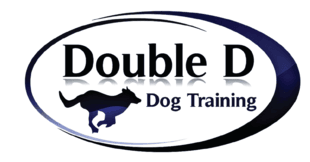Socialization is an essential part of your dog’s training. It is one of the most necessary pieces for raising a well-adjusted dog. Basically, socialization is where you introduce your puppy to many different people, animals, environments, sounds, sights, touch, and smells. If you are introducing your dog to anything new it’s socialization. But just introducing your dog to things is not enough. You want all these interactions to be positive. That means keep the fun and treats handy!
What Should I Socialize My Dog With?
People:
All ages, all skin colors, all sorts of voices, weights, all levels of energy, all sorts of wardrobe, all sorts of smells, men, women, children, babies, seniors, people in hats, uniforms, Halloween costumes. Everyone, you can possibly introduce your puppy too. All the people!
You can have people over for a puppy-party. Even try taking your dog to pet-friendly stores and businesses. There are lots of places that will allow pets beyond just pet stores, try hardware stores, banks, some clothing stores, downtown shops, even some libraries.
You want your dog to be able to be calm and confident around all sorts of people. A dog that can get along with anyone and not be shy will make a wonderful companion.
Dogs:
Socialization with other dogs starts with the puppies littermates. Socialization with other dogs happens further in your home if you have other dogs. It can also take place at training classes, dog parks, friend’s dogs, and on your daily walks.
You want to introduce your dog to many different dogs. Again find dogs of all ages, sizes, weights, smells, fur length, coat colors. As many dogs as you can find that get along with other dogs. Don’t need any incidents.
You want your dog to be calm and confident around other dogs. If you do this right you will avoid a lot of potential issues in the future, like reactivity.
Other Animals:
It’s important to introduce your dog to lots of different types of animals as well. Birds, cats, guinea pigs, snacks, ferrets, hamsters, lizards, frogs, newts, parrots, bunnies, pigs, cows, goats, sheep, chickens, horses. As many animals as possible and as many variations of those animals as possible.
You might be able to encounter these animals in your home, a friend’s home who has these animals, fairs, 4H get-togethers, farms, petting zoos, pet stores, rural lifestyle stores, and on your daily walks.
You might think that introducing your dog to other kinds of animals is silly now. But you’ll be glad that you introduced your dog to pigs when your daughter wants a potbelly pig for Christmas. You never know what animals might come into your life, so it’s just best to be prepared.
Touch:
This is one that is sometimes forgotten when a discussion of socialization comes up. Your dog needs to be touched everywhere by a variety of people. This will help him to better accept veterinary care, grooming, and other care.
Dogs should get used to being touched on their legs, paws, tail, head, ears, mouth, nose, eye area, toenails, spine, rib area, chest, hindquarters, belly area (the whole area), even the bum area (they have to get their temperature taken there).
You can practice this yourself as well as enlist the help of people at your puppy parties. Your vet or groomer should be willing to help as well. A good puppy class should include a touch time where you trade puppies all around and touch them all over. Giving lots of treats, of course.
Surfaces:
Your puppy should be introduced to lots of surfaces think hardwood, laminate, carpet, different types of carpets, grass, concrete, asphalt, snow, wet grass, rubbery mats, bubble wrap, metal, glass, plastic, sand, stones, rubble, rock, cardboard, ice, vinyl, an surface you can think of!
This will help your dog to be cool no matter the surface he is walking on. He won’t try to hold his ground an not move forward just because he has never seen a shag carpet before. He will trot right into the pet store even though they have tile floors and your whole house is carpeted. It seems pretty silly but socializing your dog with surfaces is really a wonderful thing to do.
This will happen fairly naturally as you socialize your dog in the other areas. But a few good ideas to find surfaces would be your home, your daily walks, a friend’s home, the park, playgrounds, shops, hardware stores, and puppy classes.
Summary:
The main time to socialize a dog is when he is a puppy. From birth to pre-adolescence is the most important time window. However, socialization really should be a lifelong practice. Be sure to make it positive. Work to constantly move your dog and yourself out of your comfort zones. To reap the benefits of a truly full and wonderful life!
Resources:
https://www.akc.org/expert-advice/training/puppy-socialization/
https://www.akc.org/expert-advice/dog-breeding/how-to-socialize-a-puppy/
https://www.akc.org/expert-advice/training/a-recipe-for-social-skills/
https://ferndogtraining.com/puppy-socialization/
https://mypositivedogtrainingblog.com/2013/12/15/puppy-socialization/





